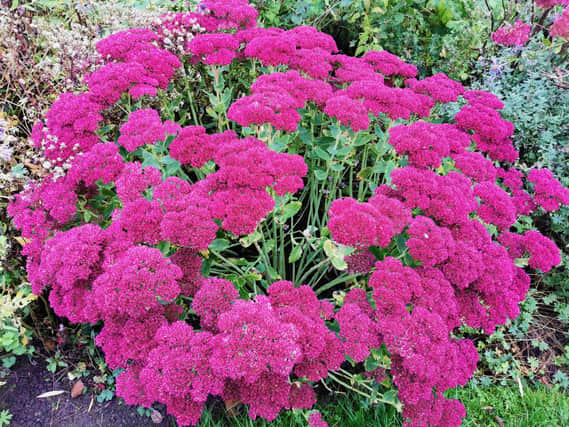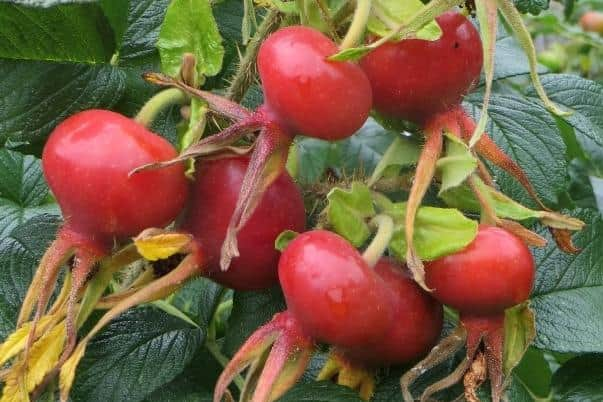The time of year to perk up your garden


Lawns are in desperate need of a trim, but it won`t stop raining. Hedges also require this to set them up for winter, and certain shrubs should have been pruned a while ago to bring them under control. To cap it all there hasn`t been time to remove all dead growth from herbaceous border perennials. In such circumstances you need a plan of action to restore the chi in your garden.
My first step is to mow the lawns with cutting blades raised a notch above summer level. This has an immediate, transformative effect on the whole garden. Next up is tackling the hedges. We have beech, privet, hawthorn and holly which are trimmed twice each year. The first comes when I`m sure nesting time is over, generally late June, and the second is in October/November. By this time, they have a ragged look that would otherwise persist throughout winter.
Advertisement
Hide AdAdvertisement
Hide AdOnce the lawns and hedges have regained that crisp appearance, we can operate at a gentle pace in cutting back spent perennial growth, pruning appropriate shrubs and paying more attention to the borders.


Life would be much simpler if we could prune all ornamental trees and flowering shrubs during one week in the year but sadly, that`s not how it works. However, some, beech and hornbeam for example, will accept a single clip in late summer/autumn and maintain their form. Our beech hedge receives the annual trim in September. There is much more maintenance involved when dwarf hedges (box and Lonicera) or topiary subjects are grown as features. Every six weeks throughout the growing season is a realistic period between trims.
Generally, all shrubs destined to flower between now and next May are now prepared with stems that have grown and matured over this past summer. Mahonia, forsythia, ribes, philadelphus, viburnum and jasmine are in this group. The correct time to prune them is immediately after they’ve flowered.
Shrubs blooming from June onward, weigela, hardy fuchsia, buddleja, lavatera for example, can be pruned now. The fuchsias are pruned severely, almost to ground level. They can take it. This rejuvenates, preventing them developing brittle old stems. Buddleja and lavatera are pruned to half their height now to prevent wind rock. Definitive pruning follows in early spring leaving them 30 centimetres high.
AN EXPLOSION OF AUTUMNAL COLOURS
Advertisement
Hide AdAdvertisement
Hide AdBusy as life in the garden is at present, we recently took time out to visit a few local hot spots renowned for autumn colour and rediscovered the joy of driving along tree-lined country lanes. Walking through a woodland, arboretum or estate is also rewarding and visiting gardens such as Alnwick, Howick, Wallington and Cragside dishes up a real treat.
Current tree and shrub attractions cover a diversity of ornamental flowers, fruits, bark and foliage. Dahlias and chrysanthemums, Michaelmas daisies and fuchsias are but some of the lingering autumn blooms currently joined by hardy, all winter favourites, jasmine, viburnum and cherry.
Some birds have already started feeding on fruits in the countryside, parks and gardens. Their current berried menu features rosehips, haws, rowan and pyracantha, but it’s only a question of ripeness and time until those on the holly disappear. They leave some ornamental crab apples as a new year treat.
Walk around the Ornamental Garden at Alnwick in February and you’ll see them feasting on Malus ‘Evereste’ and ‘Red Sentinel’. Several variegated shrubs illuminate the garden year-round but become stars over winter. Elaeagnus, pittosporum, euonymus and choisya are favourites, but they have other uses. The occasional snipping of stems brings some indoors as an addition to vase arrangements.
Advertisement
Hide AdAdvertisement
Hide AdHighlight of November gardens is the colour change in deciduous species as precious elements in the leaves are salvaged by the parent plants. Shorter days and falling temperatures are the catalysts that start this chemical process which I always see as nature’s firework display. But it lasts much longer than fleeting incendiary devices. A run of cool, sunny days will intensify the colour and keep this show on the road!